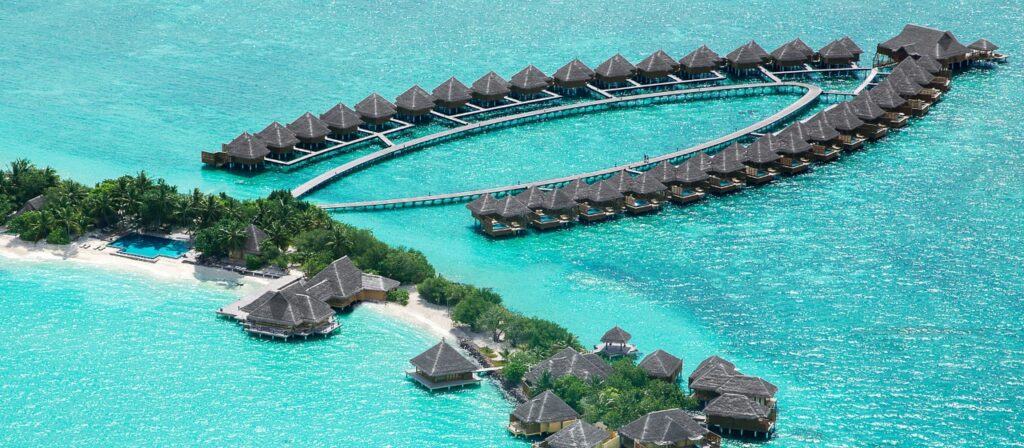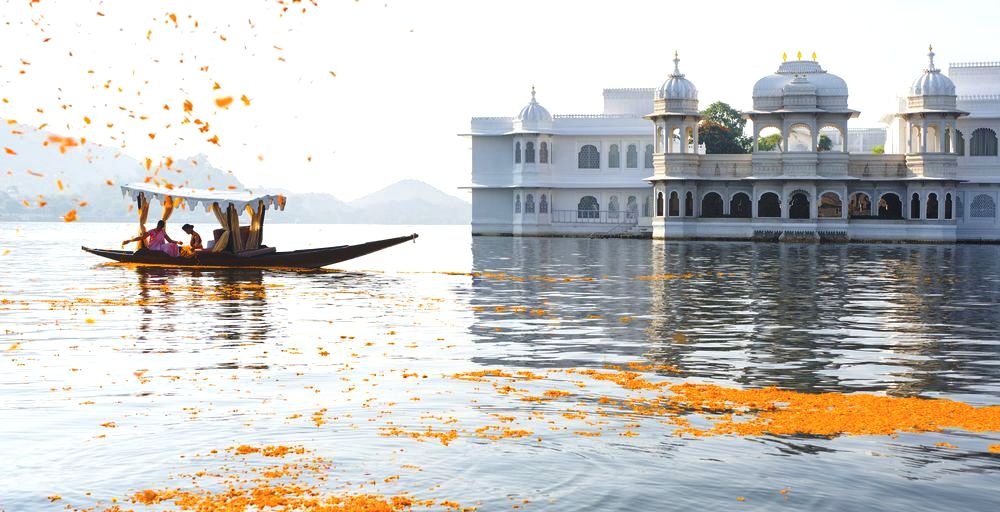I was intrigued that every big programme launched by the Indian Hotel Company (also known as The Taj Group of Hotels) had small beginnings.
Since 2007, IHCL was trying to undertake a lot of environmental initiatives. However, very soon they realized the lack of progress and its measurement. Meanwhile, figures showed that the travel and tourism industry contributed to approximately five per cent of world’s carbon emissions.
To play a responsible role as India’s leading hospitality group, IHCL decided to learn from globally acknowledged environmental practices. Their objective was to be certified for the work they proposed to do so that all hotels can could work towards identified targets and could measure and monitor their progress vis-à-vis identified benchmarks.
Their journey began in 2009 when they embarked on an integrated approach to sustainable development. It was called EARTH (Environment, Awareness, and Renewal at Taj Hotels). The first step was collaboration with EarthCheck, the world’s largest environmental certification company for hospitality and tourism industry.
EarthCheck employed third-party auditors to do on-site audits at every Taj hotel irrespective of the brand. An action plan was formulated based on auditors’ reports. An EarthCheck certification involved performance evaluation in diverse environment-related areas.
Based on successful performance in evaluation, initially a bronze certification is awarded. After sustaining it for three years, silver certification is awarded. On sustaining the silver certification for five years, a gold certification is awarded.
By 2018, 67 of the 79 EarthCheck-certified hotels achieved a gold certification, and the balance rest, silver certification. IHCL was the world’s first and only hospitality group with such an exemplary record. All the hotels proudly displayed their certificates in lobbies and rooms so that guests could appreciate staying in an environmentally-committed hotel.
To better understand the quantum of saving by Taj Hotels, Resorts and Palaces since 2008, the following comparisons make interesting reading. Over the years, these hotels saved enough energy to power over 172,232 households over 12 months; conserved enough water to fill 719 Olympic sized swimming pools; and reduced waste enough to fill 344 20-feet standard cargo containers. These resource savings collectively equate to INR 40 crores.
However stimulating it may appear, this change didn’t come easily. It required meticulous micro-analysis of every activity within each hotel. For example, a footprint is generated when a person travels in excess of 20 kilometres to work. So IHCL mapped that too in order to calculate the number of employees living beyond 20 kilometres to ensure efficient allocation of staff to properties wherever possible. Instead of importing English vegetables, an important component of most western dishes in Taj restaurants, IHCL found a vendor in the hill station of Mahabaleshwar who could help them get these.
The EarthCheck certification triggered a kind of competition among all Taj hotels across the globe to outperform each other in their environmental performance. In the process, they also learnt from each other and grew synergistically.

At one end of the spectrum were luxury hotels. For example, Taj Exotica in Maldives ran a special coral regeneration programme, through which coral were moved from areas of the lagoon (where they were under threat) to new spaces where they could be monitored by the resident marine biologist. The programme helped preserve biodiversity while allowing guests to view the coral reefs on snorkelling trips.
Back home in India, the Taj Lake Palace in Udaipur was located in the middle of the scenic yet sensitive Pichola Lake. To protect the lake and its marine life, the hotel used battery-operated boats to ferry guests to the hotel and back to the banks, besides an irrigation system that used recycled wastewater.
With its upper upscale focus, Vivanta aimed at the reduction of electricity usage, and focused on using wind, solar and even geothermal energy sources. Those in Chennai were effectively using wind energy, while the ones in Rajasthan used solar energy. The sewage treatment plant in every hotel helped in generating water for gardening, to save fresh water.
At Gateway Hotels, fruits and vegetables constituted about 18 per cent of total raw materials consumption. So, the kitchen layout was redesigned to ensure better monitoring by the chef for reduction in wastage of unconsumed vegetables. It successfully cut wastage from 20 per cent of total to just 5 per cent.
Food wastage was reduced across Group hotels in two ways. The excess edible food continued to be donated to shelters for the homeless, aged and orphans. This was a regular practice even at Taj Pierre in New York, Taj Boston, and Taj Campton Place in San Francisco. The non-edible food and leftovers of raw vegetables were managed in two ways. One was making it into compost or giving it to a piggery. The other was the use of bio -gas plants.
When food rots, it creates methane. At Vivanta by Taj in Kovalam (Kerala), the methane generated through the biogas plant was funnelled into the cafeteria for diverse purposes. This was dually beneficial. Firstly, food wastage was effectively utilized, and secondly, power consumption also reduced. The Chief Engineer at Vivanta by Taj in Goa, Jerome Lobo, converted garden waste into briquettes by thermal decomposition and used them in the tandoor fire-grill.
This award-winning innovation saved INR 1 lakh annually for the hotel, reduced the menace of garden waste, and also coal consumption that was used until then for the grill. Besides, it reduced carbon monoxide pollution generated while burning coal. It’s noteworthy that environment-related innovations across its hotels are well-documented, thereby facilitating replication across properties.
Two aspects form the core of a green hotel. The first is the physical aspects such as design of the hotel building, low energy consuming equipment and systems, water conservation, energy efficiency, materials selection and indoor environmental quality. The second aspect is the hotel operations such as eco-friendly and carbon-neutral process design, operating supplies and choice of guest amenities.
Project EARTH helped IHCL in both these aspects. It helped in measuring its carbon footprint, quantum of water consumption and waste generation. The company also attempted to convert a fixed percentage of its room inventory to EARTH Rooms, where no plastic or toxic substances were used, energy consumption and waste generation was reduced.
For the success of Project EARTH, the employees were first oriented towards these activities with the commercial objective that it made business sense to control these. However, when the usage of renewable energy increased, the employees themselves realized that there were no costs involved after the initial investment, besides there were the additional advantages of reduction in usage of fossil fuels, and pollution generated thereby.
Over a period, employees collectively reached a stage of maturity where they considered it their responsibility to optimise optimize on resources for all daily operations. The United Nations Global Compact Reporting, EarthCheck Certifications, and consistent inclusion in India’s Carbon Disclosure Leadership Index under the Carbon Disclosure Project made IHCL’s commitment and efforts visible in India and overseas. It gave the company the identity of an environmentally-conscious brand.
Views of the author are personal and do not necessarily represent the website’s views.
 The author is a thought leader in fields of study at the cusp of corporate strategy and sustainability with over 100 national and international publications to his credit. His latest book is The Tata Group published by Penguin India. He has been a Visiting Scholar at Harvard Business School, Fellow and project director at Harvard University South Asia Institute, Visiting Scholar at Copenhagen Business School, Editor-in-Chief of Harvard University Postdoctoral Editors Association and Consulting Editor at The Business India Group.
The author is a thought leader in fields of study at the cusp of corporate strategy and sustainability with over 100 national and international publications to his credit. His latest book is The Tata Group published by Penguin India. He has been a Visiting Scholar at Harvard Business School, Fellow and project director at Harvard University South Asia Institute, Visiting Scholar at Copenhagen Business School, Editor-in-Chief of Harvard University Postdoctoral Editors Association and Consulting Editor at The Business India Group.
Thank you for reading the column until the very end. We appreciate the time you have given us. In addition, your thoughts and inputs will genuinely make a difference to us. Please do drop in a line and help us do better.
Regards,
The CSR Journal Team


